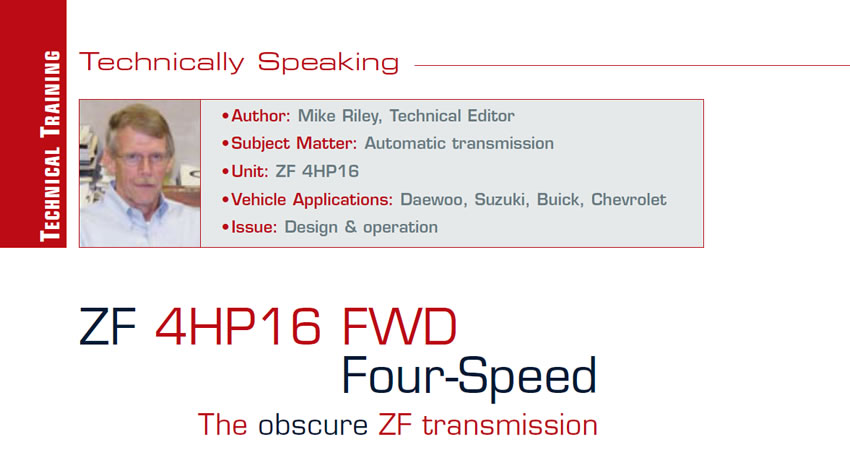
Technically Speaking
- Author: Mike Riley, Technical Editor
- Subject Matter: Automatic transmission
- Unit: ZF 4HP16
- Vehicle Applications: Daewoo Lacetti, Leganza, Magnus & Rezzo; Suzuki Forenza, Reno & Verona; Buick Excelle; Chevrolet Epica, Optra & Orlando
- Issue: Design & operation
For decades, ZF, the German transmission manufacturer, has been cranking out an array of automatic and manual transmissions, from basic three-speeds to cutting-edge eight- and nine-speed automatics. The company has been first to market with several innovations now used by most OE manufacturers in one form or another. Not all of its development projects, however, have been familiar to the aftermarket repair industry.
At the beginning of the new millennium, ZF, in conjunction with Daewoo, developed a new four-speed front-wheel-drive automatic for use in Daewoo vehicles. The model designation was 4HP16. The 4HP16 had nothing in common with the previous FWD four-speeds, 4HP14 and 4HP18.
Although ZF developed the 4HP16, what happened thereafter was not the norm. Instead of ZF actually producing the transmission as well as providing product and tech support for service, it was decided that Daewoo would take over all facets of operation. In effect, ZF was now completely out of the picture.
Domestically, this issue was not of much concern to the service industry, due to Daewoo’s exit from the U.S. market; however, it did become somewhat of an issue internationally. Daewoo models that used the 4HP16 were the 2000-up Lacetti, Leganza, Magnus and Rezzo (not big sellers in the U.S. Midwest or down south).
All this would have been a moot point, except for one thing: GM and Suzuki got involved. Because of the financial arrangements between the companies, usage of the 4HP16 ramped up. Suzuki started to use the unit in models such as the Forenza, Reno and Verona. GM used the transmission in the Buick Excelle and the Chevrolet Epica, Optra and Orlando beginning in 2003.
Although many of these vehicles are found only overseas, some have made it to the U.S. shore, and the Chevy Epica, in particular, has a noticeable presence in Canada. Therefore, it is now a possibility that the 4HP16 could show up to be repaired anywhere. In addition, there is some product, as well as technical information, available for service and repair.

The ZF 4HP16 is a normal-looking front-wheel-drive four-speed (Figure 1). It has a valve-body side cover instead of a bottom oil pan. The torque converter is a lockup design and operates like any other. The transmission consists of five friction elements (two rotating clutches and three stationary brakes), two planetary gear sets, a direct-drive pump and valve body with six solenoids. The unit does not have any one way clutches (OWCs) or bands, which means it is a synchronous-shifting transmission.
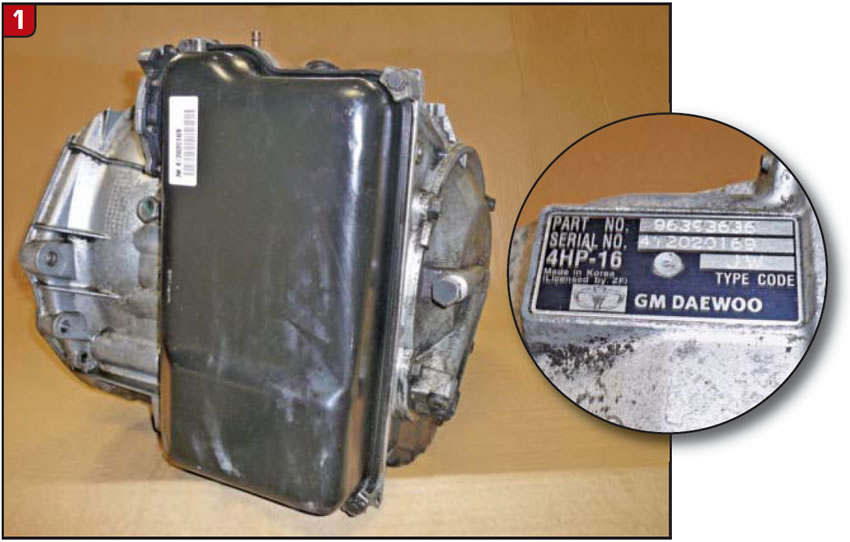
The pump is a regular gear-type unit that is positioned at the bellhousing end of the transmission. Unlike other pumps, however, the pump cover is pretty flat due to the lack of a sealing-ring tower (Figure 2). A unique feature of the pump body is that the seal/bushing bore is not centered with the pump outside diameter. There is also a washer (spacer) under the front seal.
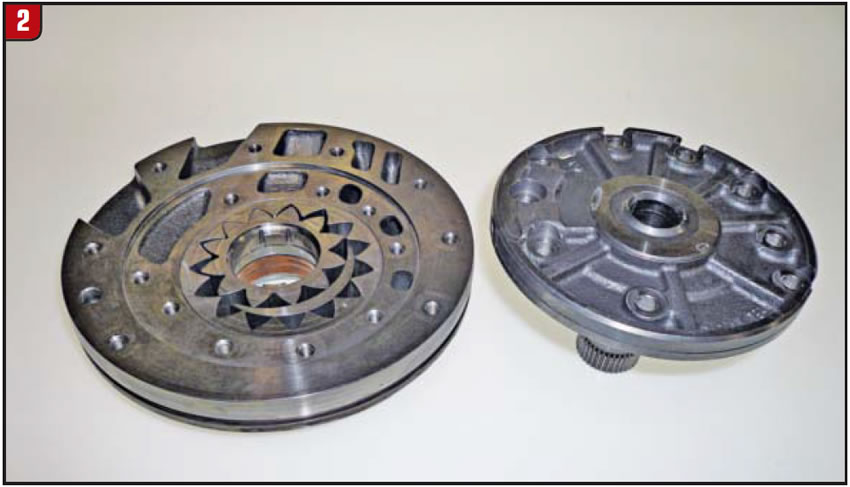
Directly behind the pump is the output-gear support, which also doubles as the F-clutch piston housing (Figure 3). There is a lock nut that secures the output gear and tapered roller bearings together and requires a tightening torque of 162 lb.-ft. There have been reports of bearing failures due to improper preload of the bearings, so ensure that the turning torque is correct. The F clutch is a stationary brake and is applied in first and second gears.
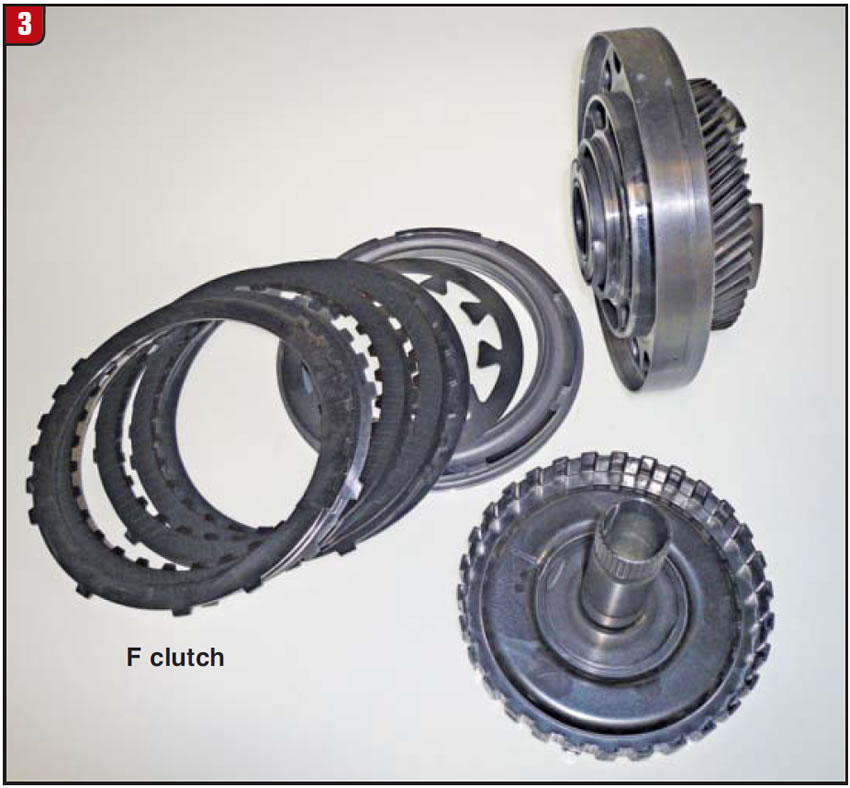
Next in line is another support that actually contains the two remaining stationary friction packs. The clutch pack on the front side is the D brake, which is applied in reverse only. The friction pack on the back side of the housing is the C brake, which is applied in only 4th gear. The friction design of the C brake is different in that the friction material is on the external-tooth plate, not the normal internal-tooth plate (Figure 4). A square metal key is positioned between the support and case to prevent support rotation.
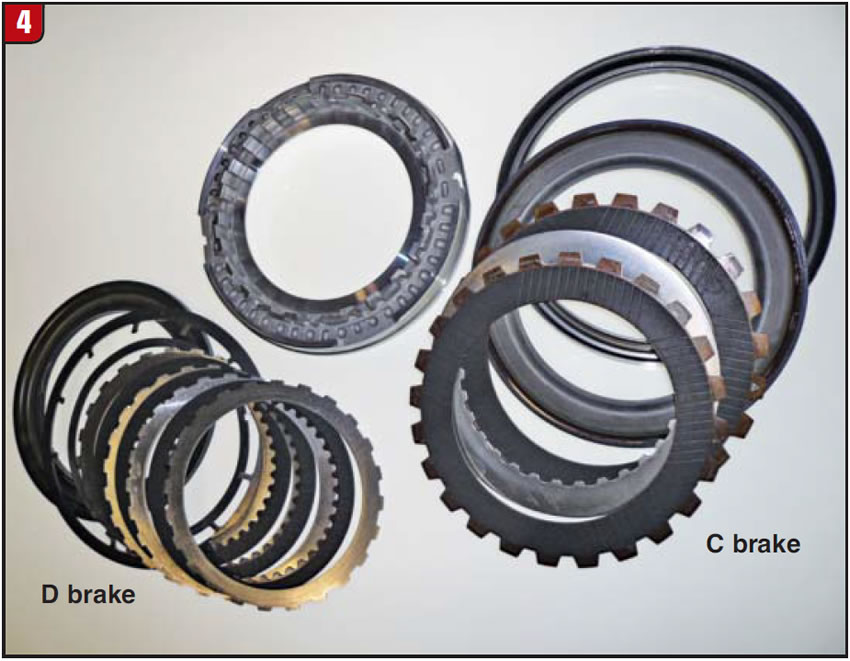
The two remaining friction elements are accessible from the end-cover side of the transmission. The clutch packs are rotating clutches B and E and are arranged somewhat similar to those of the Toyota A660. The B-clutch pack is the one toward the front and is applied in first and third. The B-clutch piston looks more like a clutch drum than a piston and somewhat surrounds the B/E-clutch housing (Figure 5).
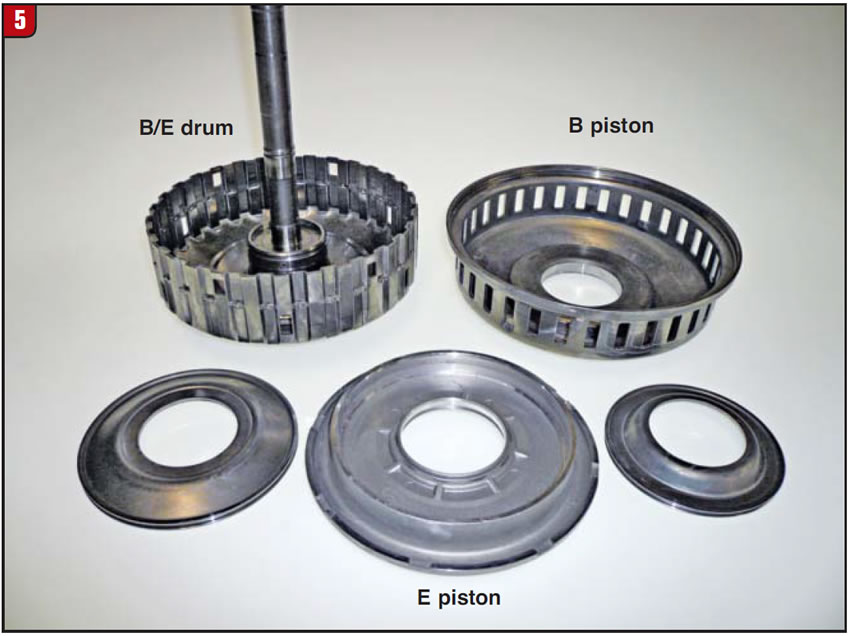
The planetary gear set consists of front and rear planets, two sun gears and two ring gears. The layout could be compared to that of an A604, in that one of the sun gears is made to a clutch hub, one planet has a ring gear that is integral and the other planet splines to the ring gear/hub assembly (Figure 6).
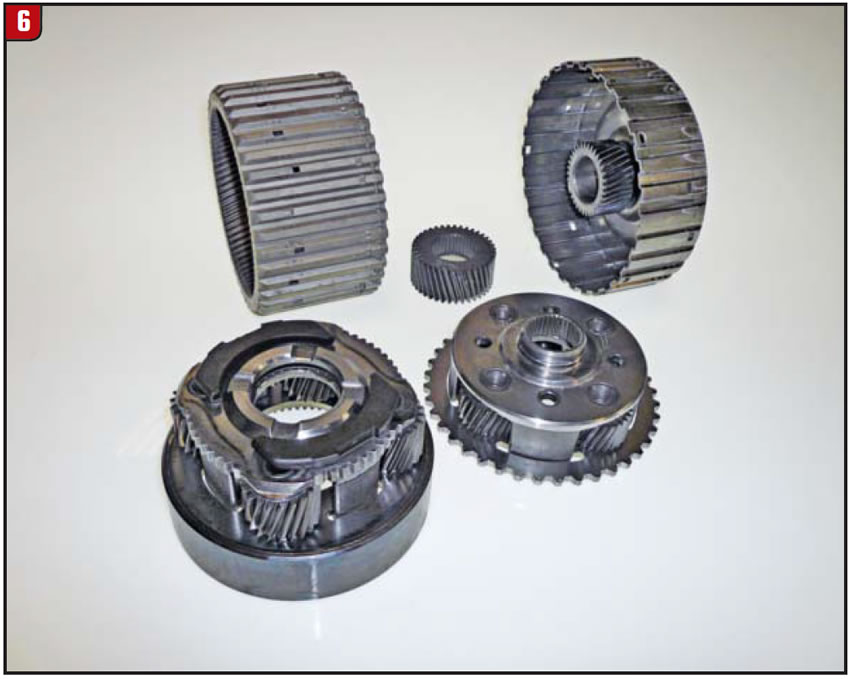
The valve body contains six solenoids consisting of three different types and an input-speed sensor. It also contains the customary amount of valves. The harness is a soft wire type with a case connector (Figure 7). The output-speed sensor is under the valve body.
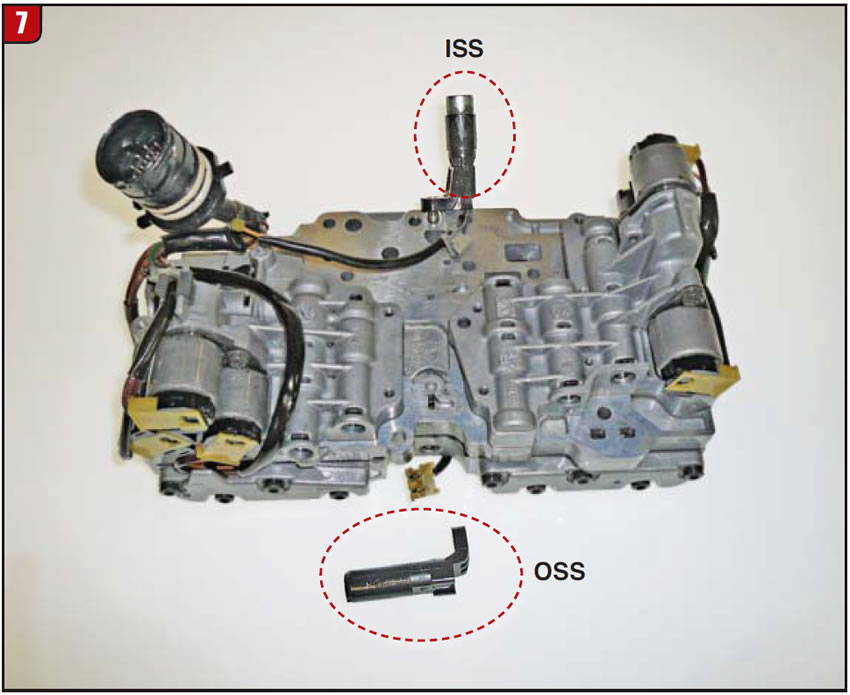
The chart in Figure 8 shows not only the clutch applications but also the solenoid firing order. Note that A (Applied) and H (Holding) are just two different terms for the same function: On.
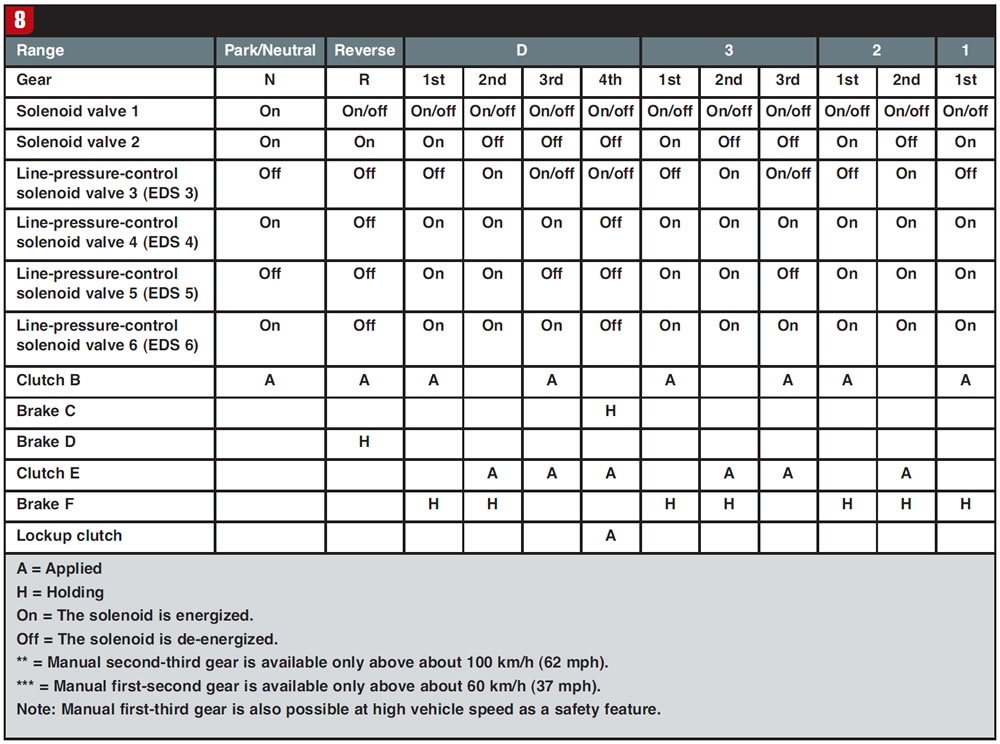
Unlike other uncommon transmissions that occasionally show up in the U.S., the 4HP16 does have the potential for repair due to the availability of tech and product, even though ZF (the developer) bowed out at the beginning. The question is, how obscure will it be?














